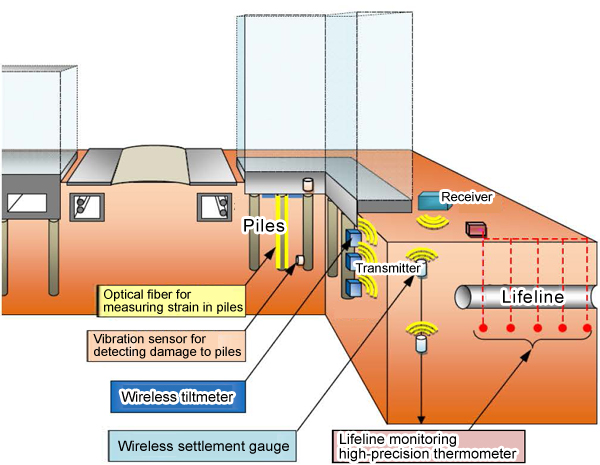On 24 December, a report was published on an experiment conducted 19-21 October 2015 on a set of technologies designed to help monitor earthquake damage to buildings' soil and pile foundations. The test was performed by Dr Kazuhiro Hayashi, a researcher at the Disaster Prevention Research Institute (DPRI), and his collaborators at Taisei Corporation and the National Research Institute for Earth Science and Disaster Prevention (NIED), using NIED's "three-dimensional full-scale earthquake-testing facility", called E-Defense.
The experiment was part of the Special Project for Reducing Vulnerability in Urban Mega Earthquake Disasters, led by DPRI Professor Masayoshi Nakashima and sponsored by the Ministry of Education, Culture, Sports, Science and Technology (MEXT).
Comments from Dr Hayashi
Our project seeks to build on the lessons learned from the 2011 East Japan Great Earthquake and develop a system that makes it possible to assess the soundness of (the extent of damage caused to) facilities (buildings) comprising the urban infrastructure, immediately following a disaster.
Our E-Defense experiment demonstrated that the system we have been working on can enable accurate monitoring of the condition of soil and piles supporting a building, which are usually hidden from view.
Going forward, our focus will be on refining these technologies by making them sufficiently reliable, so that they can be deployed in cities to help enhance disaster resilience.
Experiment summary
Assessing the soundness of building foundations, infrastructure, and lifelines is crucial to preserving and restoring city functions after a major earthquake. With these underground structures, however, the assessment process can be extremely time-consuming and costly.
Dr Hayashi and his team set out to address this challenge by developing a system that enables monitoring of damage to subsurface structures.
In the 19-21 October experiment, underground piles were monitored as they were subjected to damage from increasingly strong ground motions produced by a shaking table, and the monitoring results were evaluated through comparison with the actual condition of the tested structures.
The experiment found that, with the piles, vibration sensors could be used to help detect tilting immediately after the shaking, while optical fibers could be effectively deployed to measure the amount of residual strain in a relatively short period of time.

Subsurface earthquake-damage monitoring system




